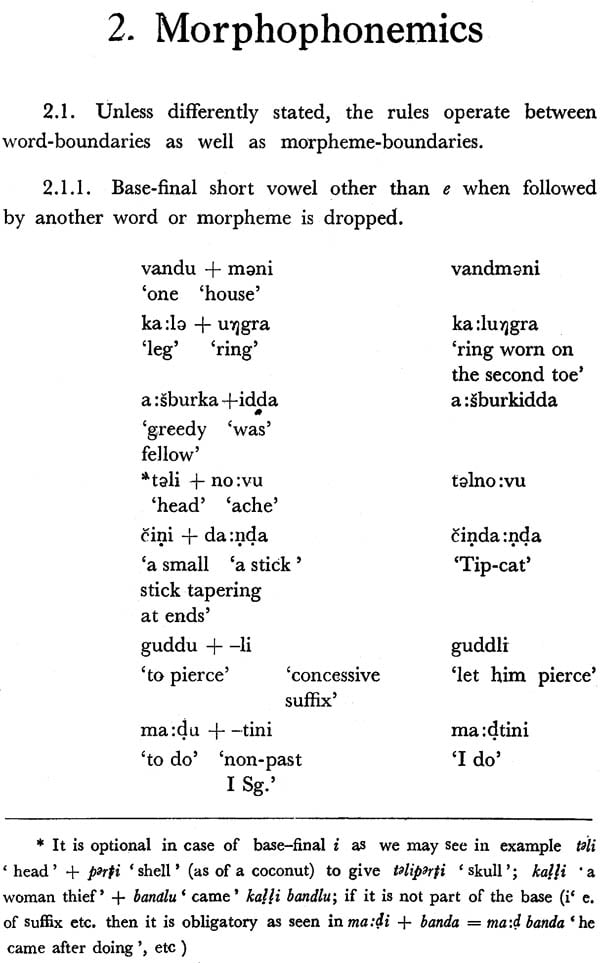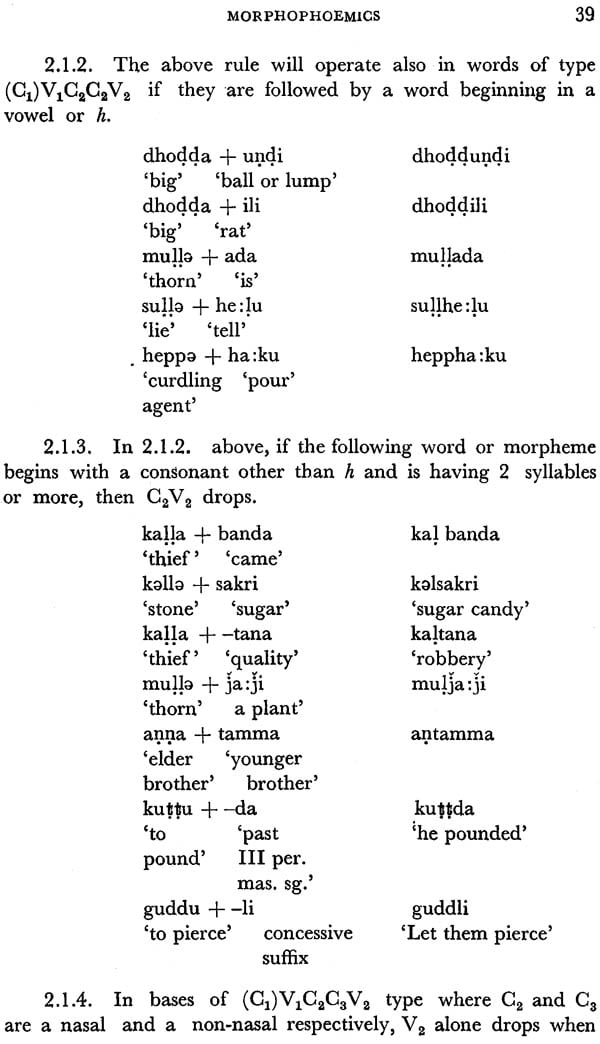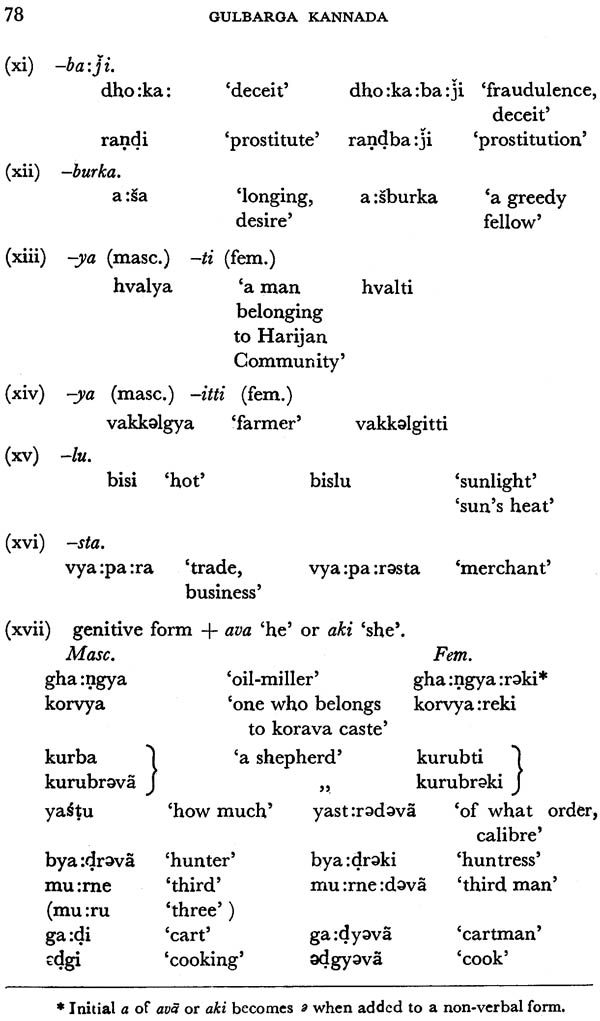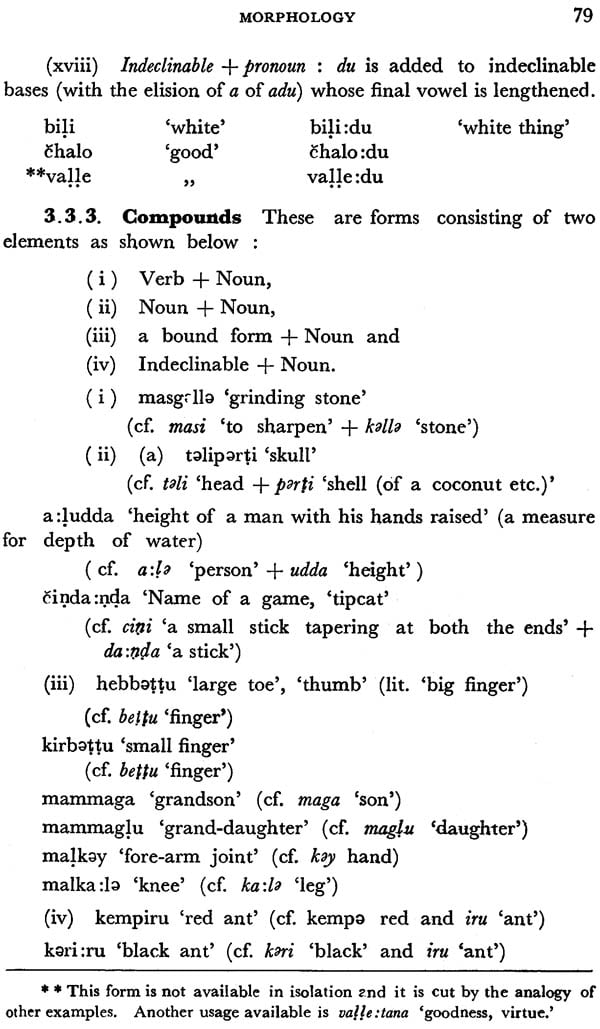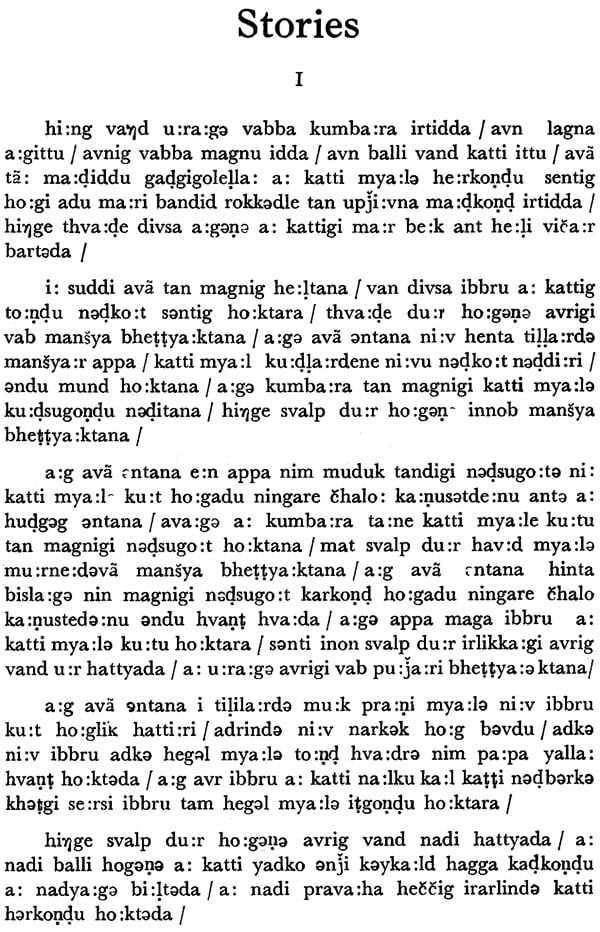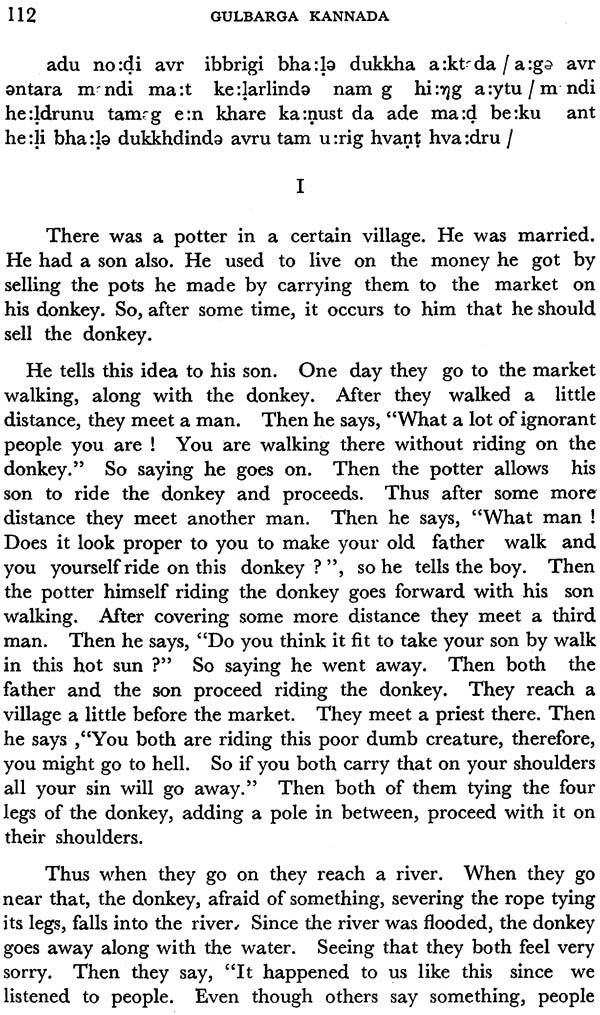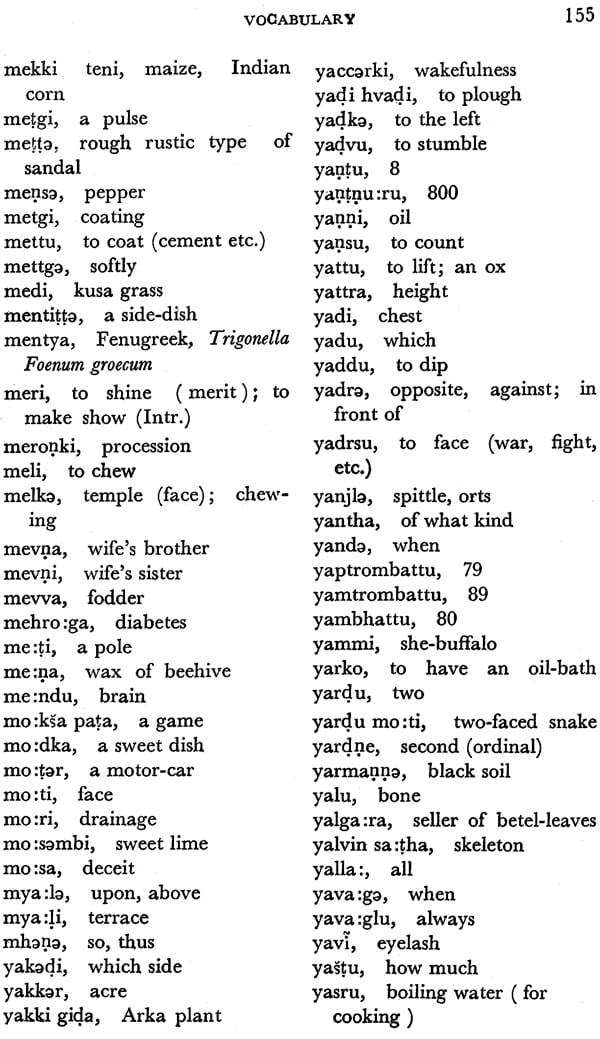
Gulbarga Kannada: Brahmin Dialect (An Old and Rare Book)
Book Specification
| Item Code: | NAM085 |
| Author: | R. Mahadevan |
| Publisher: | Deccan College Postgraduate and Research Institute |
| Language: | English |
| Edition: | 1968 |
| Pages: | 178 |
| Cover: | Paperback |
| Other Details | 8.5 inch x 5.5 inch |
| Weight | 240 gm |
Book Description
Gulbarga is one of the nineteen districts of the present Mysore State with Kannada speaking Bijapur and Raichur in the South, Bidar district in the north and the districts of Andhra Pradesh (Telugu) and Maharashtra in the east and the west respectively. The material was collected from Sri P. R. Deshmukh, a Madhva Brahmin, aged 31, coming from Suntnu:ru (Aland Taluk) 12 miles north of Gulbarga town. He is educated up to Matric and knows Marathi and English besides having a working knowledge of Hindi and Telugu. This district was included in the former Hyderabad (of the Nizam) and one can clearly see the influence of Urdu, Marathi and Sanskrit in the dialect under study.
Some peculiarities observed in the dialect in comparison with the standard Kannada are listed below:
(1) The vowel a Standard Kannada has split into ǝ and ɑ.
(2) The word-final e has regularly become i.
(3) The consonants ƒ, z and x appear due to borrowings from Urdu.
(4) Occurrence of word-final consonants, also due to borrowings from Urdu or Marathi. (Among native words only v and y occur finally).
(5) Use of dative (rational) suffix in cases where standard Kannada would use accusative; absence of any accusative suffix for the irrational bases.
(6) Occurrence of finite verbal forms of the root iru ‘to be’ such as hana, hala, hara, ada, and ava, corresponding to Standard Kannada forms idda:ne, idda:le, idda:re, ide and ive respectively.
(7) Use of –la:rd and –la:rde in negative participial and gerundial forms; – ǝple, –ruple and –ǝnǝ in adverbial forms.
(8) Use of forms like no:dǝrda:gǝ ‘while seeing’, ma:dǝrda:gǝ ‘while doing,’ irarlindǝ ‘because it is’ for standard Kannada no:duva:gǝ, ma:duva:ga iruvudarinda.
Thanks are due to Dr. S. M. Katre, Director, Deccan College, for the help and encouragement, Dr. H. S. Biligiri and Dr. D. N. Shankara Bhat for the valuable suggestions and the informant Sri P.R. Deshmukh for his patience and co-operation.
| 1. | Phonology |
| 1.1 | Phonemic Inventory |
| 1.2 | Contrasts |
| (a) | Vowels |
| (i) Long vs. Short | |
| (ii) Tongue Height & position | |
| (iii) Oral vs. Nasalized | |
| (b) | Consonants |
| (i) Unaspirated vs. Aspirated | |
| (ii) Voiceless vs. Voiced | |
| (iii) affricates | |
| (iv) nasals | |
| (v) fricatives | |
| (vi) Single vs. geminated: Intervocalic | |
| (vii) Before consonants | |
| 1.3 | Distribution |
| 1.3.1 | Vowels |
| 1.3.2 | Consonants |
| 1.4 | Consonant Clusters |
| 1.4.1 | Initial, containing 2 consonants |
| 1.4.2 | Medial, Containing consonants |
| 1.4.3 | Containing 3 consonants |
| (a) Clusters where the first two consonants are the same | |
| (b) Clusters where the first two consonants are nasal + a homorganic stop | |
| (c) Remaining | |
| 1.4.4 | 4 consonant clusters |
| 1.4.5 | Final clusters |
| 2 | Morphophonemics |
| 3 | Morphology |
| 3.1 | Introduction |
| 3.2 | Verb |
| 3.2.1 | Verbal bases |
| 3.2.2 | Sample paradigms |
| 3.2.3 | Non-past stem |
| 3.2.4 | Past stem |
| 3.2.5 | Perfect Stem |
| 3.2.6 | Personal suffixes |
| 3.2.7 | Examples of Tense forms |
| 3.2.8 | Allomorphy of Tense suffixes :Tables |
| 3.2.9 | The Verb 'to be' |
| 3.2.10 | Imperative |
| 3.2.11 | Concessive |
| 3.2.12 | Potential |
| 3.2.13 | Infinitive |
| 3.2.14 | Conditional |
| 3.2.15 | Continuative Participle |
| 3.2.16 | Adverb of Concomitant action |
| 3.2.17 | Gerund |
| 3.2.18 | Relative Participle |
| 3.2.19 | Suffix-ǝple and -ruple |
| 3.2.20 | Modals |
| 3.2.21 | Other peculiarities |
| 3.3 | Noun |
| 3.3.1 | Simple bases |
| 3.3.2 | Derived bases |
| 3.3.3 | Compounds |
| 3.3.4 | Numerals |
| 3.3.5 | Echo words |
| 3.3.6 | Classification of bases |
| 3.3.7 | Plural |
| 3.3.8 | Sample paradigms |
| 3.3.9 | Case suffixes : Nominative |
| 3.3.9.1 | Accusative |
| 3.3.9.2 | Dative |
| 3.3.9.3 | Genitive |
| 3.3.10 | Changes in the bases |
| 3.3.11 | Postpositions |
| 3.3.12 | Exceptions in the formations of case forms |
| 3.3.13 | Pronouns |
| 3.4 | Indeclinables |
| 3.4.1 | Adjectives |
| 3.4.2 | Adverbs |
| 3.4.3 | Connectives |
| 3.4.4 | Particles |
